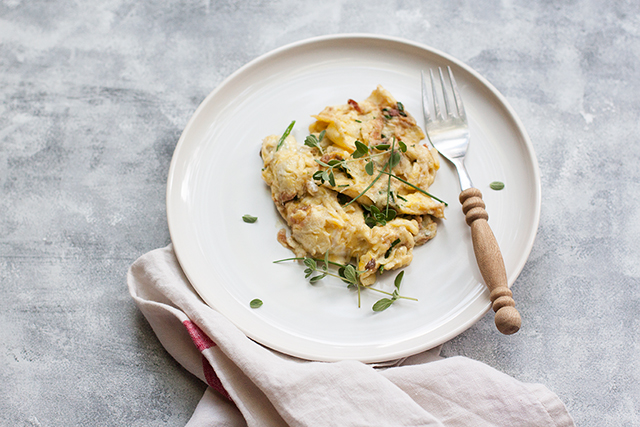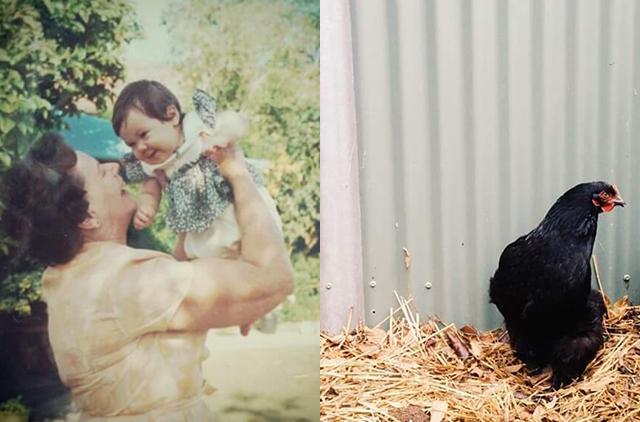
My first memory of cooking was with my grandmother, Rosemary, in Sydney. She taught me how to make scrambled eggs on her electric stovetop, the kind with the coiled heating elements, in her small, linoleum-lined kitchen with cupboards that stuck a little when they closed. She was not an exceptional cook — I can remember plenty of bland and overcooked vegetables and custard made with powder to pour into pre-bought pie cases with tinned pineapple, her specialty — but she worked hard to put a balanced, home-cooked meal on the table three times a day, every day.
The eldest of eight children, she dropped out of school during the Depression to help her single mother look after her siblings and work as a seamstress at David Jones. When the Second World War broke out and she was engaged to my grandfather, Aubrey, she started working on war-torn planes as a sheet metal worker, putting them back together, when many of the men who used to do this work were off fighting the war. She said it was just like dressmaking, only using different materials.
She had a twinkle in her eye and a distinct laugh that can really only be described as a cackle. She was a strong, incredibly smart woman with a fighter spirit who led her female co-workers out on the airport tarmac one day on a strike to earn equal wages to men.

In my first ever cooking lesson that I can remember, Rosemary — Nanna Rose, we called her — showed me how to make scrambled eggs in a small saucepan on that electric stove that she saved up for working on war planes. We cracked and egg into a small bowl and beat it with a fork with a splash of milk and a pinch of salt. Then into the pan went a good knob of butter — my grandmother was very, very fond of real butter, which she would smother onto her toast with Vegemite every morning — and when it began melting, over a slow heat, the egg went in. With a spoon, she showed me how to mix in the melted butter and gather the egg as it cooked around the edges, stirring slowly, waiting a bit, stirring again, until the thick, creamy flecks of egg began to take shape but are still glistening and soft. “You have to take it off now, just before it’s finished cooking, because it will keep cooking once you put it on the plate,” she instructed.
She may have overcooked her broccoli and brussel sprouts but I have always preferred this way of making soft, creamy scrambled eggs, exactly as she showed me, with real butter and plenty of it, and carefully cooking them slowly.

Scrambled eggs with anchovies — Uova strapazzate e acciughe
Fabio Picchi, Florence’s famous chef of Teatro del Sale and Cibreo, suggests to do this too, but with a fried egg, over the top of the sauce of melted butter and anchovies. Salted anchovies are my preference — they are preserved under salt rather than oil, but if you only have the ones under oil that is fine too. Salted anchovies need to be split into their two fillets to pull out the spines. Soak and rinse them well under water to remove the excess salt, then pat dry before using.
For one person:
- A large knob of butter
- 2 anchovy fillets
- a few fresh herbs — parsley, chives, oregano, for example
- 2 eggs, beaten in a small bowl
In a small saucepan or frying pan, melt the butter over low heat. As soon as it is melted and still pale, add the anchovy fillets and herbs and let them melt down into a glorious sauce. Tip the eggs in and swirl them through the buttery anchovy sauce slowly, letting the eggs rest only for a moment to cook before moving them again. When they are still glistening and a bit wobbly, not entirely opaque but almost, take them off the heat and place on a plate. No need for salt here, but pepper is nice. Serve immediately with some crusty bread.
Original Website: Eggs and anchovies | Emiko Davies


 English
English  中文
中文